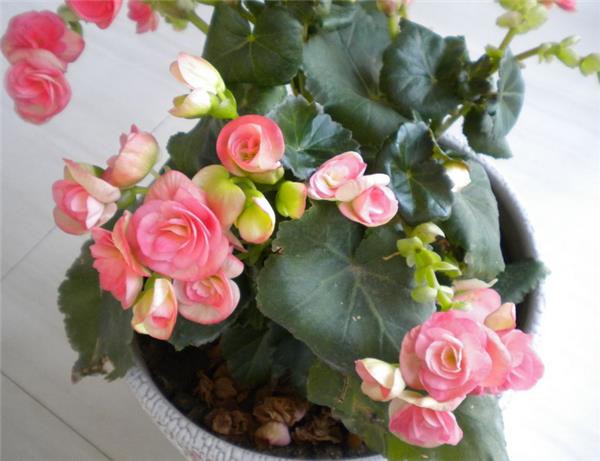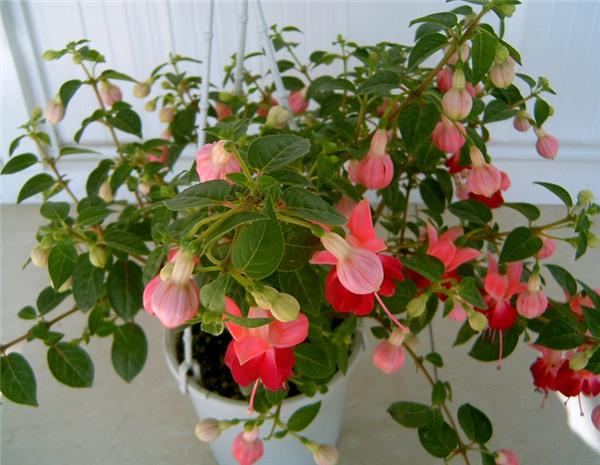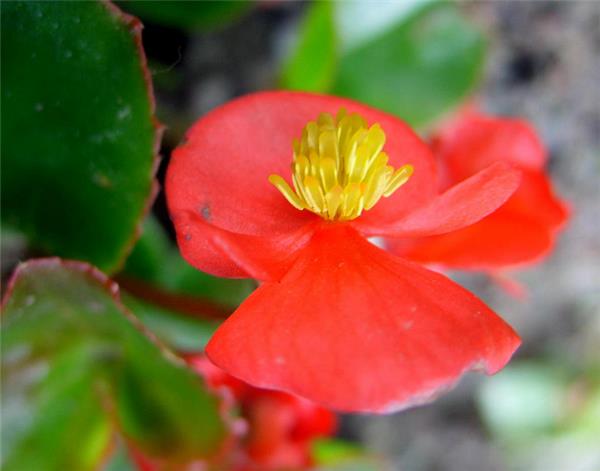How to trim the four seasons begonia pruning technology
How to trim the four Seasons Begonia? Next, we will introduce to you the relevant knowledge of the pruning technology of begonia in the next four seasons. Let's take a look!

Pruning technique of Begonia in four seasons
Generally speaking, the pruning of the four seasons begonia is mainly heart-picking, which is the same as jasmine, rose and other flowers. when the flowers are withered, we must cut off the residual flowers on the branches in time and pick the heart. Only in this way can the four seasons begonia be more branched and blossom. If the heart-picking work is not carried out in time, it will lead to the plant growth of the four seasons begonia, the plant shape is not beautiful, and the flowering is very few.
Begonia flowering shrubs have long and short branches, short branches are flowering branches, and long branches are vegetative branches. Two weeks after anthesis, in addition to the thinning of some inner bore branches and cross branches, the long branches can be truncated properly, the long branches leave 3-4 buds from the base, and the rest can be cut off, which is beneficial to increase the number of short branches forming flower buds.
Make sure the whole plant is ventilated and transparent. In addition, when pruning during the dormant period, you should be careful not to cut off the full branches that grow short in the first year. At the same time, excessive use of nitrogen fertilizer should be restrained when fertilizing.
Tripterygium, deciduous shrubs, bright flowers, graceful trunk, spring flowers, summer leaves and autumn fruits, the garden can not only be planted individually, but also in rows and pieces, and has been used as a commonly used flower and tree in landscaping.

Spring pruning
Pruning is the best when the tree has not germinated in early spring, and the pruning methods are mainly short cutting and branch thinning.
1. Newly planted plants:
According to the principle of keeping the superior and eliminating the inferior, 3 to 5 strong branches are generally selected to cut off too many weak twigs, disease and insect branches, and curved branches from the base, so as to promote the sprouting of new branches from the rhizosphere in the coming year, increase the number of branches in the clump, and pay attention to not leaving stakes when cutting. For the selected strong branches, usually the strong branches are cut lightly, the weak branches are heavily cut, and the outward buds are left at the cut in order to expand the scope of the clump, and at the same time, the cluster is hollow, which is conducive to ventilation and light, and more flower buds are formed. In places where the conditions of fertilizer and water are good, they should be cut lightly and long, and where conditions of fertilizer and water are poor, they should be cut again and stay short.

two。 Plants after colonization:
The ideal shrub type should keep the state of high inside and low outside, sparse and dense inside, which can not only make the branches receive sunlight evenly, but also increase the permeability of shrubs, which is more conducive to the healthy growth of plants. The specific pruning methods are as follows:
The main results are as follows: (1) cut off the disease and insect branches, cross branches, over-dense branches, overlapping branches and introverted branches from the base. Choose 5 to 8 branches with suitable direction and thickness, and the cutting height should be the same at the base.
(2) since the flowering branches of 3-5-year-old begonia are the most, the flowering branches should be renewed year by year to keep the plants in full bloom, and the floral branches should be renewed year by year, generally 2 to 3 branches per year, and the excess new branches and old flowering branches can be removed.
(3) as the flower buds of Begonia are basically born on the short branches, a few sections should be left and cut off to increase the short branches.

Post-flowering pruning
In order to maintain the tree shape and make the overall effect beautiful, it needs to be pruned properly after flowering. Remove the crowded branches on the plant and the protruding branches on the crown outline two weeks after flowering. Properly truncate the long branches, leave 3 to 4 buds from the base, and cut off the rest, which is beneficial to increase the number of short branches that form flower buds. The fruit after anthesis should be removed as soon as possible to avoid nutrient loss and affect the formation of flower buds in the following year.
Matters needing attention
1. In order to control the plant height, the truncation of flower branches should be light and should be carried out year by year, so as to avoid the influence of heavy truncation on the number of flowers in spring.
two。 The number of branches should be determined according to the size of the space. When planting a single plant, you can leave more branches; if you plant in rows or in pieces, if the space is small, you can leave fewer branches.
3. When pruning after anthesis, the branches with leaves are subtracted, the photosynthetic area is reduced, and the growth of the plant is inhibited, so the pruning should be light.
- Prev

How to raise four seasons begonia the maintenance method of four seasons begonia
How to raise four seasons begonia the maintenance method of four seasons begonia
- Next

What is the reason for the yellowing of begonia leaves in four seasons?
What is the reason for the yellowing of begonia leaves in four seasons?
Related
- Wuhan Hospital Iron Tree Blooming Result Was Instantly Frightened by the Gardener Master
- Which variety of camellia is the most fragrant and best? Which one do you like best?
- What is the small blue coat, the breeding methods and matters needing attention of the succulent plant
- Dormancy time and maintenance management of succulent plants during dormancy
- Minas succulent how to raise, Minas succulent plant pictures
- What are the varieties of winter succulent plants
- How to raise succulent plants in twelve rolls? let's take a look at some experience of breeding twelve rolls.
- Attention should be paid to water control for succulent plants during dormant period (winter and summer)
- Watering experience of twelve rolls of succulent plants
- Techniques for fertilizing succulent plants. An article will let you know how to fertilize succulent plants.

